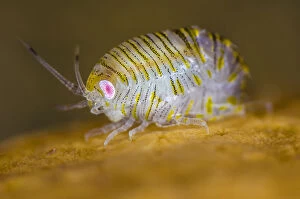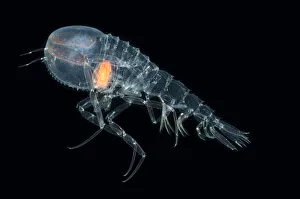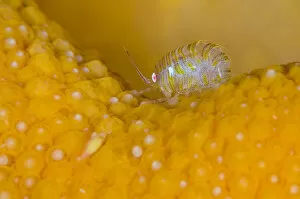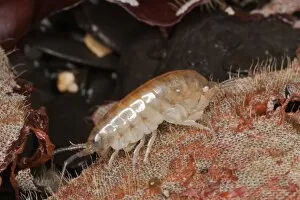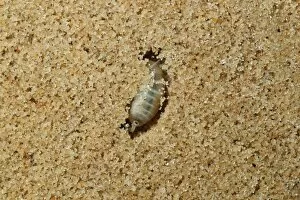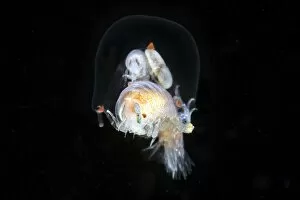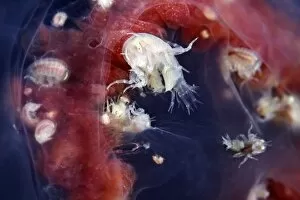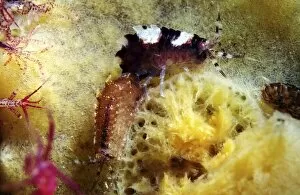Amphipods Collection
Amphipods, also known as sandhoppers or gammarid shrimp, are fascinating creatures that inhabit various marine environments
All Professionally Made to Order for Quick Shipping
Amphipods, also known as sandhoppers or gammarid shrimp, are fascinating creatures that inhabit various marine environments. From the deep sea to shallow coastal waters, these small crustaceans can be found in a wide range of habitats. One such species is the Amphipod Iphimedia obesa, which can be seen perched on top of a colony of Deadmans fingers coral (Alcyonium digitatum). This symbiotic relationship between the amphipod and coral showcases the intricate connections within marine ecosystems. In the depths of the Mid-Atlantic Ridge, another intriguing species called Cystisoma sp. Resides between 530-750m below the surface. These deep-sea they have adapted to survive in extreme conditions and play an essential role in maintaining biodiversity at great depths. Moving closer to shore, we encounter Gammarellus homari hiding amongst snails in a kelp stem. These resourceful amphipods demonstrate their ability to camouflage and find shelter within their surroundings. The diversity extends beyond just corals and kelp stems and can also be found living among dahlia anemones like Urticina felina or even hitching rides on blue seasquirts like Cyproideidae sp. , showcasing their adaptability across different host organisms. On sandy beaches, sandhoppers like Orchestia gammarellus and Talitrus saltator scuttle beneath strandline debris or burrow into sand for protection. Their presence is crucial for nutrient cycling and ecosystem stability along coastlines worldwide. Lastly, Gammarus locusta demonstrates its resilience by seeking refuge under stones on shores during colder months. These gammarid shrimp are vital components of intertidal communities and contribute to overall ecosystem health. These captivating glimpses into the world highlight their ecological significance as well as their remarkable adaptations for survival in diverse habitats.

